It’s cold outside and you want to make a great first impression. Make sure you are fully armed with the knowledge to choose the right jacket for any event. You are sure to turn heads when you have the perfect jacket for your ensemble.
After you read this post, you will learn everything there is to know about jackets. You will learn the history of this piece of clothing, the different parts of jackets, the types of materials used and the wide variety of styles. You will also learn what style of jackets are trendy now and how to wear them best. Do you want to be an expert? All you have to do is keep reading.
Contents
- Introduction to jackets
- Types of jackets
- Jackets for women and how to wear them
- Jacket Styles depending on the Occasion
- What Jackets are in Style & Outfit Ideas
Introduction to Jackets
We all have our favorite jackets. Mine is a soft denim jacket that has been well-worn and deeply loved for many years. In this chapter, you will be introduced to the rich history of jackets. You will learn about the parts of a jacket and common materials.
You will also learn a question most of us have wondered from time to time: What is the difference between a jacket and a coat?
By the time you have finished reading, you will have expert knowledge of jackets. The best part? This info makes jacket shopping easier and much more fun!
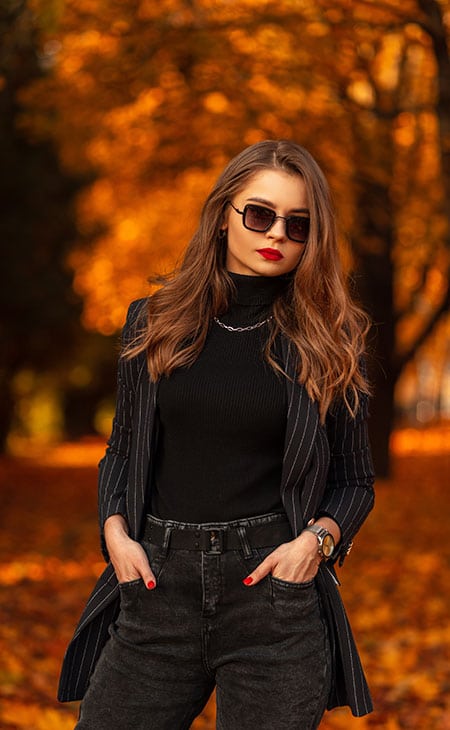
What is a jacket?
A jacket is a piece of clothing that is typically worn as outerwear. It has a bodice that reaches to the waist or hips. A jacket usually has long sleeves that extend to the wrist. Most jackets have some type of closure.

Jackets come in a wide variety of styles. Some are worn as part of an ensemble. Others are worn strictly as outerwear. There are also jackets that form a specific function. For example, rain jackets are made with a material that is meant to keep the wearer protected from moisture. Motorcycle jackets are built to be thick and strong so that they might withstand road accidents.
Jackets may be very thin to heavyweight. A jacket might be worn during chilly weather to add a layer of warmth. They can be constructed of various fabrics depending on the style and purpose. A light jacket might be made from silk or rayon, while a heavier jacket could be made from leather.
As with other clothing pieces, the fashion of jackets changes on a regular basis. A color-block jacket may be indicative of the fashion trends of the 1990s, while plaid jackets and boyfriend blazers are more popular in the 2020s. There are also jackets that stand the test of time. A traditional blazer or a classic bomber jacket never goes out of style. Investing in a high-quality, timeless piece is always a good idea.
Some items that are similar to jackets include coats, parkas, shrugs, shawls, dusters, hoodies, and ponchos.
Parts of a jacket
As simple as a jacket seems, most consist of 30 or more basic parts! Knowing the different parts of a jacket is important for people who want to have a great fit, want to sew their own jackets, or simply seek a better understanding of this important piece of outerwear. Are you ready to learn all of the parts of a jacket? Keep reading!
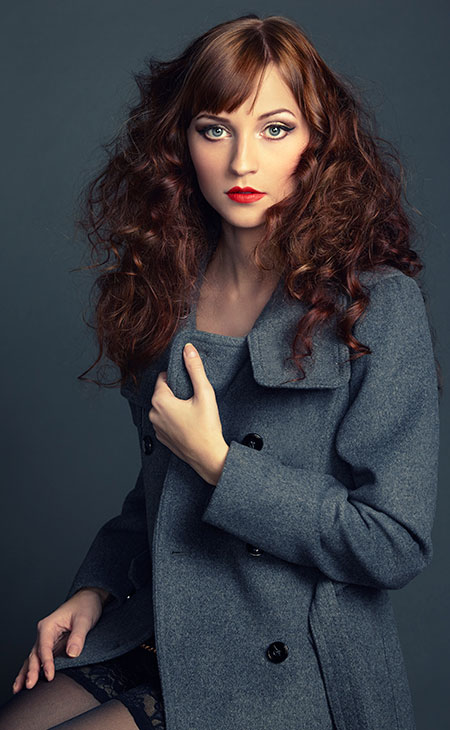
PARTS OF A JACKET: TERMS AND MEANINGS
Sleeve Vent
A small opening at the base of the sleeve.
Sleeve Seam
The seam between the upper sleeve and under sleeve.
Sleeve Cap
The point where the sleeve meets the shoulder.
Sleeve Front
The part of the sleeve that faces the front of the jacket.
Sleeve Hem
The bottom of the sleeve.
Upper Sleeve
The top portion of the sleeve.
Under Sleeve
The lower portion of a sleeve.
Armscye
The opening that goes around the arm at the shoulder.
Shoulder
The seam where the sleeve meets the neck.
Front Upper Collar
The collar at the front of the jacket that is seen from the outside.
Under Collar
The portion of the collar that is inside the jacket.
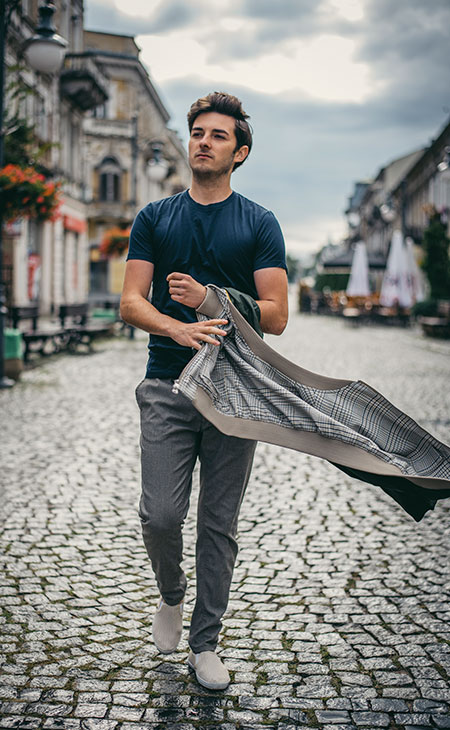
Collar Roll
The point where the upper and under collars meet.
Collar Lapel
The lower point of a collar.
Collar Notch
A corner on a lower collar.
Collar Gorge
The point where lower and upper collars meet.
Back Upper Collar
The top of the backside of the collar.
Break Line
The opening in the jacket.
Jacket Front
The front portion of the jacket.
Jacket Center Front
The centerline through the front of the jacket.
Side Seam
The meeting place of the side front and the side back.
Jacket Side Front
The section between the jacket front and side seam.
Side Front Seam
The area where the jacket front and jacket side front meet.
Center Back Seam
A seam that runs through the middle of the coat on its backside.
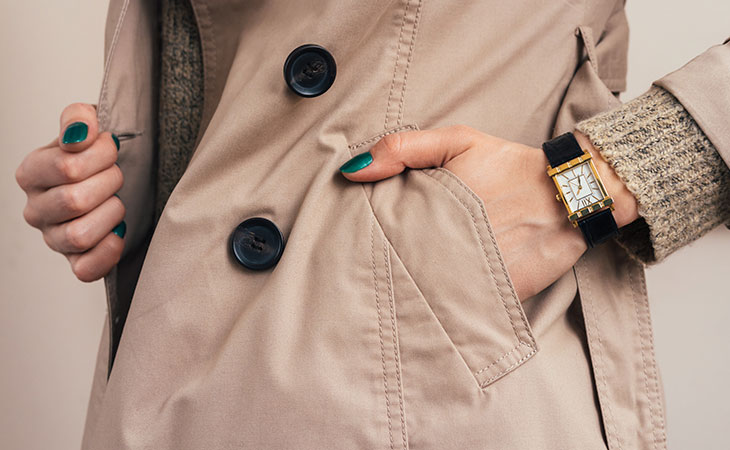
Side Back Seam
The meeting place of the jacket back and jacket side back.
Jacket Side Back
The fabric between the jacket back and the jacket side front.
Jacket Back
The full-back of the jacket.
Back Vent
A small opening in the back of some jackets to allow for easier movement.
Jacket Hem
The bottom of the jacket.
Yoke
A portion of the jacket that covers the shoulders from back to front.
Yoke Front
The front portion of the yoke.
Yoke Back
The back portion of the yoke.
Back Facing
Fabric between the jacket’s lining and the under collar.
Back Lining
The lining inside of the jacket.
Back Lining Pleat
A pleat on the lining that allows free movement.
Pocket Flap
A flap for a pocket, usually on the front of the jacket.
Welt Pocket
The pocket behind or above the pocket flap.
Chest Pocket
A small welt pocket at the chest.
PARTS OF A JACKET: BASIC DETAILS
Sleeves
Sleeves are the portions of the jacket that cover your arms. Most jackets have long sleeves that reach from the shoulder to the wrist. Sleeves may be made from a singular piece of fabric or may be multi-part with an upper and under-sleeve.
Sleeves are usually made from the same material as the remainder of the jacket. However, in some instances, sleeves are made with mesh or other see-through components. They can also serve as decorative pieces with contrasting colors or patterns.
Collar/Lapel
The collar of a jacket is the portion that wraps around the wearer’s neck. Collars may be simple, unobtrusive pieces that go somewhat unnoticed. They may conversely serve as statement pieces that completely alter the look of the jacket.
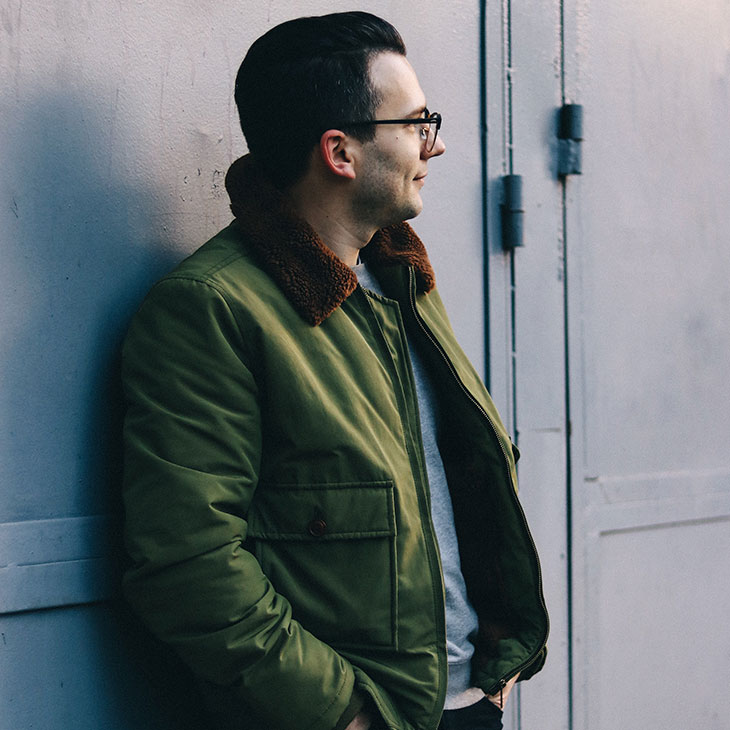
Some different types of collars include the cloverleaf, asymmetric, peter pan, mandarin, wing, sailor, and shirt collars. Those collars that have upper and lower pieces are generally referred to as lapels.
Lining
The lining is the fabric found on the inside of the jacket. Lining protects and reinforces the jacket’s exterior fabric. It is usually made of a soft, slick material like silk or satin. Jackets with the purpose of providing warmth may be lined in fleece or fur.
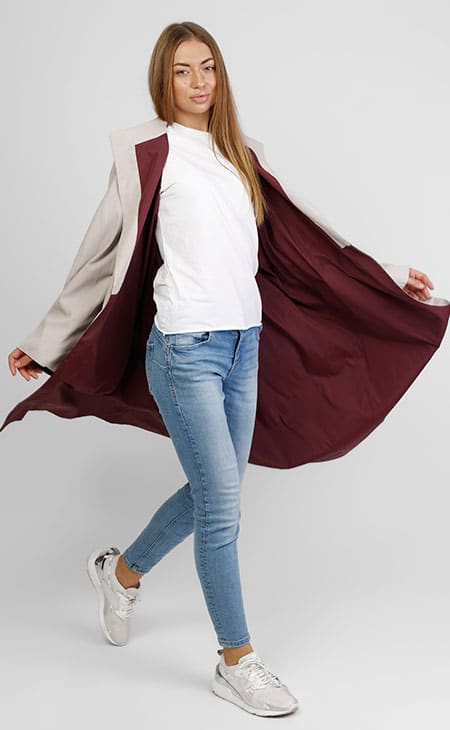
Not all jackets have linings. Many have an only partial lining in the back or in the back and sleeves.
Yoke
A yoke is a piece of fabric that covers the shoulders. It is connected to the back and front panels of the jacket. Sometimes, the yoke is put in place to provide structure for jackets that are made of lighter materials. A yoke may also simply serve a decorative purpose.
Not every jacket has a yoke. Choosing a yoked or yokeless jacket is generally a matter of personal taste.
Shell
A jacket shell is the outer portion of a jacket that is used for cold weather conditions. The shell adds an additional layer of warmth. It might also be weather-proofed for conditions that could turn to rain or snow.
Jacket shells are popular with hikers and skiers. Softshells are light and windproof. They allow for flexibility, which makes them great for outdoor sports. Hard shells are usually insulated and very durable, making them perfect for rough conditions.
Hood
A hood is a part of a jacket that can cover the wearer’s head. It may be a permanent part of the jacket, or it could be detachable by a zipper or, more commonly, buttons. Hoods can be worn loosely or might have a drawstring for a more secure fit.

WHAT’S THE DIFFERENCE BETWEEN JACKET AND COAT?
The difference between a jacket and a coat is a touchy subject. Some people swear that a jacket is a lightweight version of a coat. Others say that coats are long while jackets are short. Still, others believe they are synonyms that can be used interchangeably. Who is right?
Many jackets do not have hoods. Those that do have hoods tend to be sports jackets or casual wear.
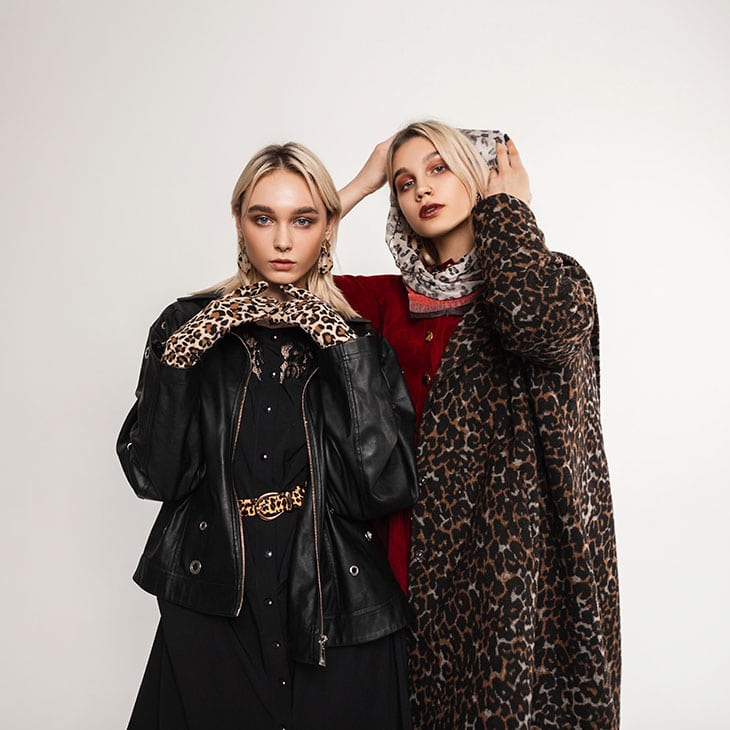
The answer is: All of these points of view have some merit.
A piece of outerwear that reaches the waist or hips is a jacket. A piece of outerwear that falls below the hips is a coat. However, a very heavy jacket that is meant for winter weather can also be correctly referred to as either a coat or a jacket. Basically, there is some amount of interpretation allowed when it comes to discerning the difference.
For those who like hard and fast rules, length can be the key. Shorter items are jackets, while longer items are coats, regardless of the weight or material. Be aware that there are also some types of coats that can be shorter than usual.
History and origins of the jacket
It is believed that the first jackets were worn during the middle ages. The first jackets were tightly worn, lightweight tunics. The word “jacket” reinforces this history as it comes from the friend jaquet, meaning small tunic.
The earliest jackets were worn by laborers to stay warm while they worked outdoors. They became very popular with the military as well. In the 19th century, jackets became more mainstream. Men started wearing single-breasted jackets that they often wore buttoned to the neck. Meanwhile, women wore short morning coats.
It was 1857 when Italian fashion magazine “Corriere Delle Dame” shared images of jackets worn by both men and women. By the end of that century, few fashionable individuals would be seen without jackets when they attended social events and dinners.
The first denim jacket was introduced by Levi Strauss in 1880. The early version of the jacket, which he called “Levi’s Blouse,” continues to be a popular choice among all social classes today.
Common materials used to make jackets
Jackets can be made from virtually any material. However, there are some materials that are much more popular than others. For instance, artists may make jackets from recycled plastics, though these are unlikely to reach the mainstream. The following materials are those you are most likely to find in your favorite jacket styles.
JACKET MATERIALS: TERMS AND MEANINGS
- Wool: A heavy, natural material that is warm and stylish.
- Shearling: A suede-like material that is both soft and warm.
- Leather: A material made from animals that is strong and durable.
- Polyester: A man-made material often used for lightweight jackets.
- Cotton: A fiber made from the cotton plant used to make materials like denim.
JACKET MATERIALS: BASIC DETAILS
Wool and Wool Blends
Wool is a material crafted from the fleece of sheep. Wool can be light or heavy, depending on its quality. Dark wools tend to be denser, while lighter wools may have a pastel shade. Likewise, dark wools are often thicker and better for cold weather than lighter wools.
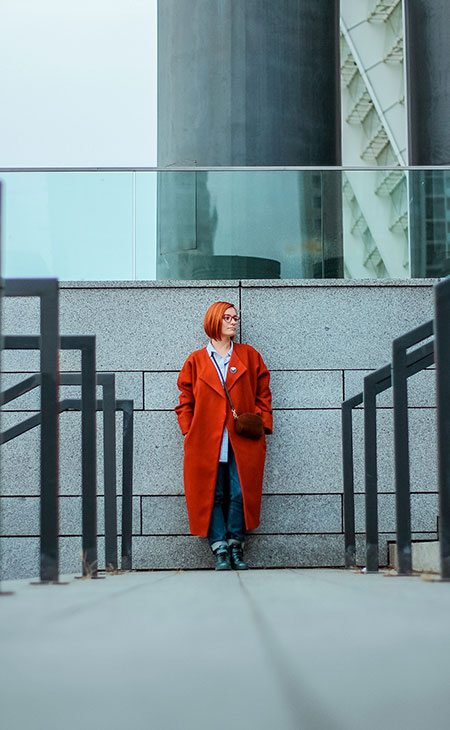
A wool blend is a wool that is mixed with polyester or another man-made fiber. They are softer and easier to work with than 100 percent wool. Sometimes, blended wool is made with a natural fiber like angora or cashmere.
Wool jackets need good lining to keep from being itchy and uncomfortable.
Shearling and Faux Shearling
Shearling is the skin of a sheep or lamb. The soft material is a type of suede leather that provides flexibility and warmth. It is often paired with a wool lining.
Shearling jackets are warm, but they are not weatherproof. This is one of the reasons manufacturers have made faux shearling to mimic the look and feel while allowing wearers to enjoy their jackets in the rain or snow.
Leather and Faux Leather
Leather is the skin of animals, usually cows. The animal is skinned, and the hide is tanned before it is formed into clothing and accessories. Leather is popular for jackets because it is extremely durable and long-lasting. Well-made leather jackets will keep their shape and form for years with little upkeep.
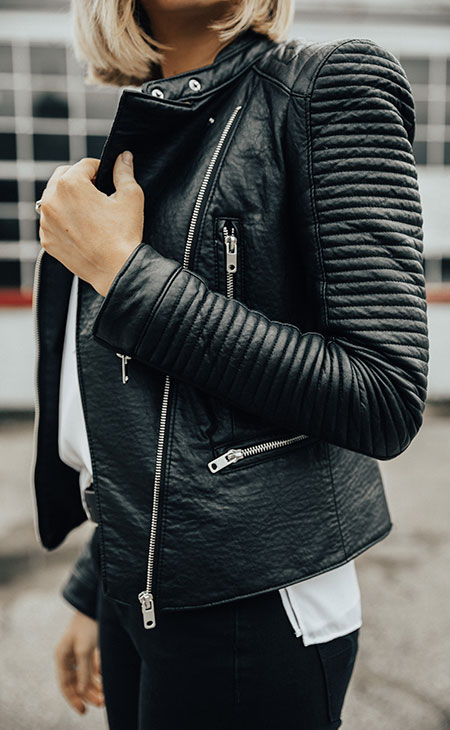
Vegans and thrifty spenders may prefer faux leather. Faux leather looks like leather, is usually waterproof, and is often machine washable. However, it does not have the durability of natural leather.
Polyester, Fleece, and Polyurethane
Polyester is a form of plastic that can be used to make clothing. It is popularly used in jackets, linings, and fillings. Polyester is highly weather-resistant. It is a common material for windbreakers and thick snow jackets. A big bonus with polyester is that it can be manufactured in many colors and patterns. Those who want to make a statement with their jackets might use polyester.
Fleece is a type of polyester that is made to mimic the look and feel of wool. Fleece jackets are very warm and soft.
Polyurethane is similar to polyester in that it is a type of plastic fiber. However, polyurethane has more of a plastic feel, making it somewhat unpleasant to the touch. Most polyurethane jackets are lined with softer polyester materials.
Cotton
Cotton is a soft fiber that is made from spinning cotton plants. The natural fiber is comfortable and warm, though rarely warm enough to protect against very cold weather. Jackets may be made with 100 percent cotton or blended with polyester. Cotton can be dyed into virtually any color or pattern.
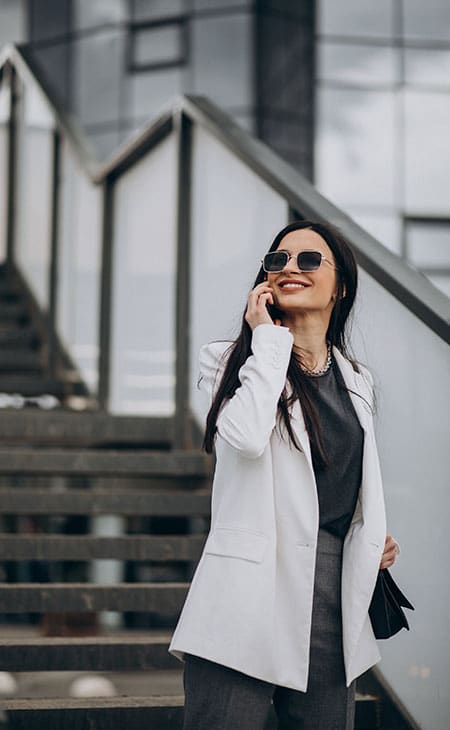
Denim is a form of cotton that is manufactured to increase warmth and durability. Denim jackets are among the most popular.
Now you have a great foundation for knowing all there is to know about jackets. Are you ready to learn even more? In the next chapter, your eyes will be opened to the various styles of jackets you can buy and wear.
Types of Jackets
Many people refer to any waist-length, long-sleeved outer garment as a jacket. They might not even realize the vastly different types of jackets that are available today! Jackets come in styles that fit everyone’s body type and fashion sense. From the anorak to the windbreaker, jackets offer different types of protection and design.
Once you have read this chapter, you will be able to talk to anyone about any type of jacket. Are you ready to learn? Let’s get started!
Jacket Types
The different types of jackets range from thick and heavy for cold-weather wear to light and breezy for warmer days. Many jackets are simply decorative pieces that add style to any ensemble.
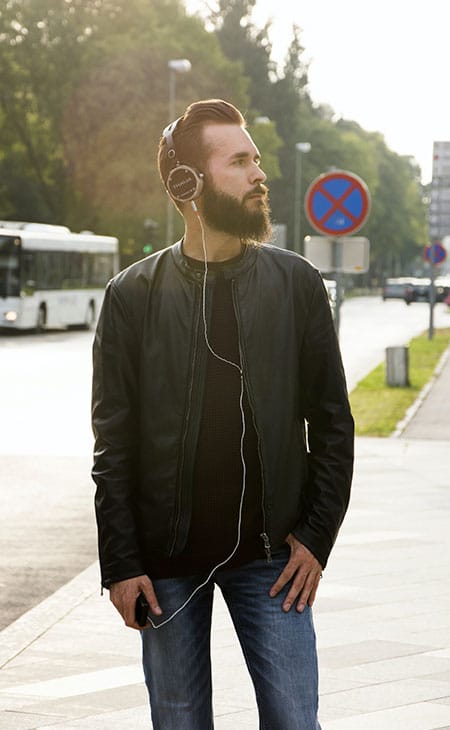
The following descriptions explain the typical style, purpose, materials, and even a glimpse into the history of each jacket type. You are sure to learn a few things about jackets that you never knew before!
To get you started, here is a fun fact: The Harrington Jacket got its name from a character on a television soap opera!
ANORAK
An anorak is a jacket that is made specifically for cold-weather wear. It was invented by the Inuit, who fashioned the coat from the hide of seal or caribou. It was then lined with fur to trap in warmth. They would then cover the anorak with fish oil to create a water-resistant surface.

Most anoraks that are purchased in stores today are very similar to the original anoraks in style and function. They are usually made from waterproof nylon and stuffed with down or synthetic fiber. The hoods are often lined with faux fur, but real fur is also sometimes used.
What is distinctive about an anorak is that it is a pullover jacket. It may have a drawstring hood and/or a zipper at the chest to allow for an adjustable fit while still being easy to wear and remove.
BLAZER
A blazer is a jacket that is often associated with school uniforms or club sports. It is an open-front jacket that may or may not have buttons in the front. When worn sans uniform, blazers have a similar appearance to suit jackets. They are often worn with dress clothing but can be used to liven up casual wear as well.
There are many types of blazers, and they can be made from practically any material. They are regularly seen in cotton and linen. However, blazers can be fashioned from leather or denim on occasion. Many uniform blazers include insignia or badges sewn onto sleeves or the breast pocket.
The term blazer originated in 1825 when the St. John’s College rowing club, nicknamed the red blazers, wore these types of jackets with their uniforms.
BOLERO
A bolero jacket, commonly simply referred to as a bolero, is a short jacket that falls above the waist. It usually has a completely open front that does not meet. Boleros often have 3/4 sleeves. They are well-structured and are usually made of stiff material.
The modern bolero is modeled after the chaquetilla seen in the traje de luces of matadors in bullfighting rings. However, the modern bolero is seldom as ornate and is not worn with the matador’s capote de paseo.
BOMBER JACKET
A bomber jacket is a waist-length jacket with a ribbed waistband and arm cuffs. It has side and breast pockets and a zippered front. Bomber jackets are usually made from leather. They can also be made from synthetic materials.

The original design was inspired by the jackets that pilots wore during military operations in the early 20th century. Today, bomber jackets are used to keep warm while also adding style to a wardrobe.
BLOUSON JACKET
A blouson jacket has a style and structure similar to the bomber jacket. It usually has a ribbed waist and cuffs, a zipper closure, and four pockets. The primary difference between the bomber jacket and the blouson is that the blouson has a tight cinching that allows it to balloon around the waist.
A traditional blouson is made with a cotton blend and has a soft lining to add extra warmth. They are usually waterproof. Some blouson jackets have hoods that are attached or detachable.
BIKER JACKET
A biker jacket is a tight jacket that is waist length or slightly lower. Wrist-length sleeves are tightened with buckles, snaps, or zippers. The jacket zips up the front and often has a belt for a tighter fit. These jackets are made from tough leather. They often have additional zippers and studs for decoration.
The purpose of a biker jacket is to protect the wearer while riding a motorcycle. It is considered personal protective equipment for bikers who need strong material that will help to guard them in case of an accident.
BOYFRIEND JACKET (SEE ALSO: BLAZER)
A boyfriend jacket is a traditional blazer that is cut in a manner that fits loosely on a smaller-framed figure. It has a slightly longer-than-normal length and a slightly wider-than-average shoulder. It provides a casual, slouchy look.
DOUBLE-BREASTED JACKET
A double-breasted jacket has two columns of buttons on its front flaps. The buttons may be functional, but this is rarely the case. In most instances, only one column of buttons is used to close the jacket, while the other column is simply decorative. Double-breasted jackets often have peaked lapels.
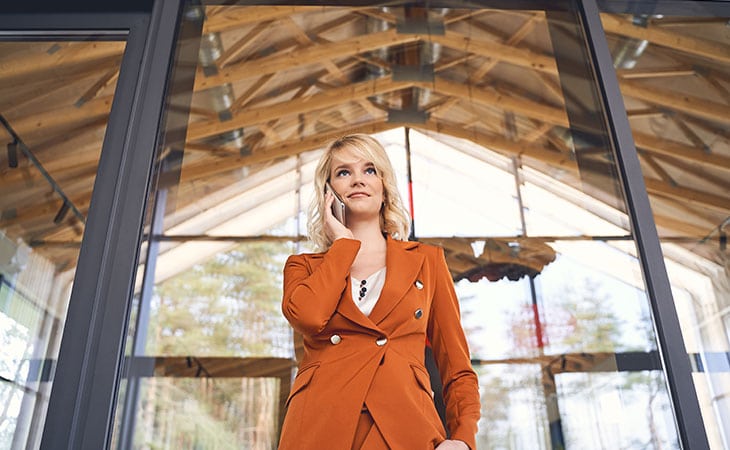
Double-breasted jackets were popular through the early 20th century when they were mostly replaced by their single-breasted counterparts. Double-breasted jackets are usually considered very formal and may even be found with tails for wearing during special occasions.
DINNER JACKET / TUXEDO
A dinner jacket, or tuxedo, is a formal jacket worn for evening events and special occasions. The jacket is made from wool, polyester, or rayon with satin lapels. It is almost always worn in black or very dark blue. Occasionally, more vibrant colors are offered.
Dinner jackets are typically worn as part of a three-piece suit that includes a white dress shirt, black bow tie, and black pants. In addition, they may be worn with a waistcoat or cummerbund.
The first dinner jacket was worn by King Edward VII in 1865 when he was still the Prince of Wales. The term tuxedo was adopted from Tuxedo Park in New York, which was the site of a country club where the dinner jacket was commonly worn.
DENIM JACKET
A denim jacket, or jean jacket, is a jacket made entirely from soft denim. It usually is waist length with several functional pockets. The jacket buttons up the front and often has adjustable sleeve openings that also button or snap closed.

The first denim jacket was made by Levi Strauss in 1880. The jacket was created as a work jacket due to its tough exterior and long-lasting material. However, jean jackets are now very popular across all classes and age groups. They are seen as timeless fashion choices that can be worn year after year.
DONKEY JACKET
A donkey jacket is a jacket that falls well past the waist. It has an unstructured waist area, which creates a boxy look. There is no vent in the back and no lapels. The jacket does have a collar that turns up and buttons to the chin. Donkey jackets may have zip-front closures but usually have buttons. Donkey jackets are usually made from a waterproof wool blend with shoulder panels made from leather or synthetic materials.
The donkey jacket was invented by George Key in 1888 for the construction workers of the Manchester Ship Canal. The name of the jacket comes from donkey engines.
CASHMERE JACKET
A cashmere jacket is technically any jacket that is made from cashmere. The fiber is made from cashmere goats, which originated in Kashmir, India. It is known for being extremely soft and delicate, which creates a beautiful jacket that is rich and pliant.
Cashmere blazers are particularly popular among those who want a sophisticated look in their professional wear.
CHORE JACKET
A chore jacket is a jacket that was designed specifically for working in outdoor conditions. It is a longer jacket, falling to the hips or lower, which is why some people refer to the item as a chore coat. It has many oversized pockets and large collars that can be turned upward for extra protection.

A chore jacket is made from heavy twill, denim, or canvas. It was invented in France in the late 19th century using a dark blue color. In France, the jacket is known as a “work blue.”
COACH JACKET
“Coach jacket” can be a confusing term to anyone who is new to learning about fashion. In this case, “Coach” doesn’t refer to the designer but to the athletic trainer who leads sports teams.
The coach jacket is a type of windbreaker. It is a lightweight nylon jacket that flows easily and ends past the waist. These jackets are offered in multiple colors and styles. They are often paired with hoodies to add warmth as the standard coach jacket is unlined.
CROPPED JACKET
A cropped jacket is any jacket with a hem that ends above the waist. Cropped jackets can reach just below the breastbone or only slightly above a natural waist. Cropped jackets are offered in multiple styles but are almost always thought of as very casual.

A cropped jacket may have full sleeves, short sleeves, or 3/4 sleeves. They are versatile and fun, but they are not meant to provide warmth. These jackets are thought of as fashion accessories rather than true outerwear.
CHEF’S JACKET
A chef’s jacket is a piece of outerwear worn by chefs to protect the chef from spills. A chef’s coat is made from thick, white cotton. It is double-breasted with two columns of functional buttons. The buttons are rarely metal but are instead made from cotton.
Chef’s uniforms usually consist of the chef’s jacket, a chef’s hat, and black checkered pants.
FAUX-FUR JACKET
A faux-fur jacket is a jacket that is covered in artificial fur. The jacket itself may come in many styles, but the commonality is that the entire outside is covered in fur-like material. These jackets are generally lined in satin. They sometimes have a front closure but are often left open.

Faux-fur is made from synthetic materials rather than the pelts of animals. This makes them less controversial for cruelty to animals but more controversial for planetary stewardship.
FIELD JACKET
A field jacket is a military-style jacket that was originally created for soldiers after World War I. The modern field jacket most closely resembles those that were worn during the Vietnam War as it was specifically designed for use in a tropical climate. It is lightweight and waterproof with plenty of pockets.
Field jackets are often made from a cotton blend that is light, flexible, and waterproof. Some field jackets are made from denim, though this is less common.
FLEECE JACKET
A fleece jacket is a jacket made to provide warmth during cold weather. It is usually used on chilly days that are neither rainy nor snowy as fleece is not waterproof. A fleece jacket is often worn under an unlined jacket or coat.

Fleeces jackets are very lightweight and generally low cost. They may zip up the front or be pullovers with zippers or ties at the chest.
Fleece jackets were first designed in 1979 by Malden Mills and Patagonia.
HARRINGTON JACKET
The Harrington jacket is a waist-length jacket that is lightweight, flexible, and roomy. It was originally designed by Baracuta in the 1930s, who referred to the coat as a G9. It was made for golfers who needed jackets to combat outdoor elements but also didn’t want to impede their swing. The G9 is still in production today.
The Harrington jacket has a ribbed waist and sleeve openings, a zippered front, and two side pockets. The traditional G9 uses Fraser tartan lining.
The jacket was first popularized in the United States when Elvis Presley wore a version of it in the movie “King Creole.” However, the name “Harrington” was adopted for the jacket because it was regularly worn by Ryan O’Neal’s character Rodney Harrington in the television soap opera “Peyton Place.”
HOODED JACKET
A hooded jacket is a jacket that has a hood. In most instances, the hood is sewn into the jacket. There are times in which the hood is attached with snaps, buttons, or even a zipper. This allows wearers to remove the hood when it is not needed.

A specific form of the hooded jacket is a sweatshirt-style jacket called a hoodie. A hoodie may be worn as a pullover shirt or will have a zip-front. Hoodies usually have one or two large pockets.
LINEN JACKET (SEE ALSO: BLAZER, SUIT JACKET)
A linen jacket is a jacket made from the fibers of the flax plant. Linen is a lightweight fabric that is also extremely durable. Linen is particularly popular in hot summer months when professional-looking clothing is required, but heavier cotton is less favored.
Most linen jackets are blazers or suit jackets. They are often worn as part of professional or semi-formal suits.
MILITARY JACKET (SEE ALSO: BOMBER JACKET, FIELD JACKET)
“Military jacket” is a generic term that refers to any jacket that is regularly worn by members of the armed services. Some military jackets include those that are blazer-style, double-breasted jackets, bush or safari jackets, field jackets, and bomber jackets.
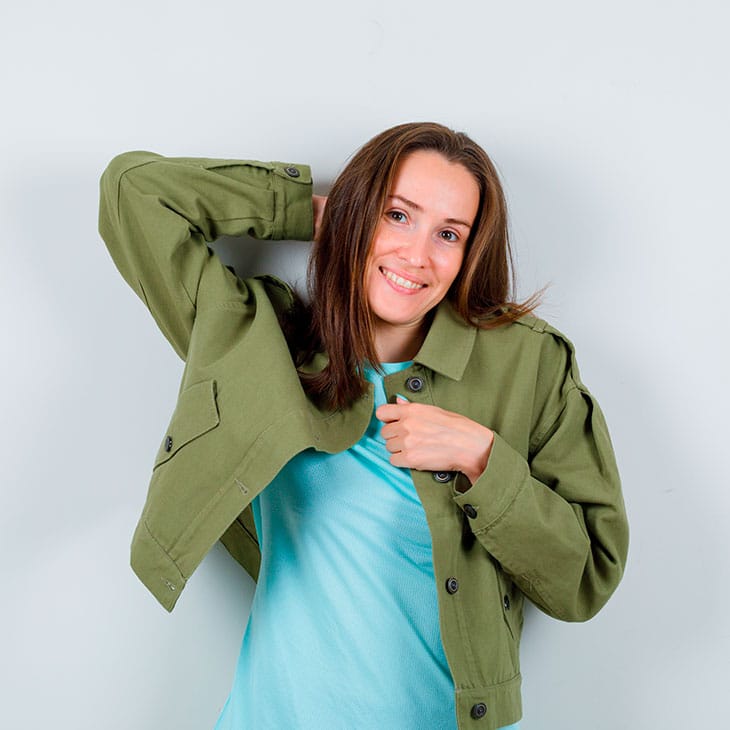
Individuals can purchase jackets that are made to resemble those worn in or inspired by the military. They can also purchase authentic military jackets from military surplus stores.
LEATHER JACKET (SEE ALSO: BIKER JACKET)
A leather jacket is any jacket made from leather. They may be constructed from tanned leather or suede. In most instances, the term “leather jacket” refers to a motorcycle or biker jacket.
PARKA
A parka is a heavy jacket that is worn in cold weather. The thick jacket is filled with down or synthetic fiber. It has a hood that is attached to the jacket. Either the entire jacket or just the hood is lined with fur. Parkas are popular with people who spend time outside in extreme winter weather.
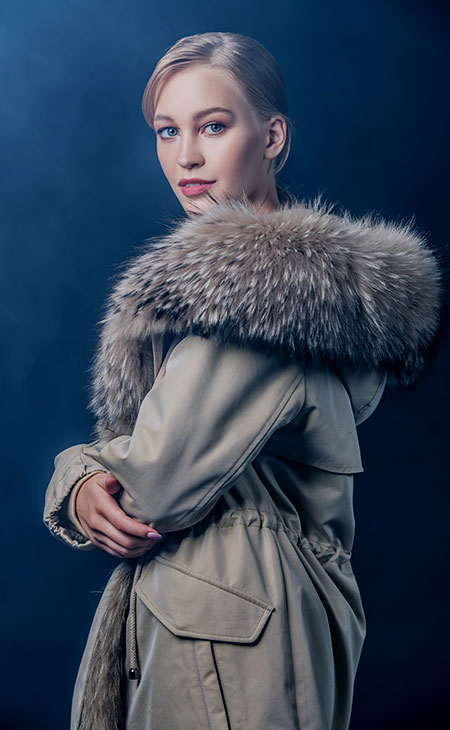
There are those who confuse the parka with the anorak. The big difference between the two is that the parka opens in the front and has a zip or button closure. The anorak is a pull-over jacket.
PUFFER JACKET / QUILTED JACKET
A puffer jacket is a quilted jacket that is worn in cold weather. It is typically made from synthetic materials like nylon and stuffed with down. The jacket is quilted, which creates air pockets that allow more heat to be absorbed into the jacket. Puffer jackets usually have hoods, side pockets, and zipper closures.

The history of the puffer jacket dates to 1936 when Eddie Bauer crafted a jacket filled with down that could be worn on his outdoor excursions.
PEPLUM JACKET
The peplum jacket gets its name from the short overskirt attached to the jacket’s waist. This overskirt is known as a peplum. It is a flared or pleated skirt that can be very short or several inches long.
The peplum jacket is typically highly structured to make the angles stand out. The waist and shoulders are usually accentuated with clear points, though there are always exceptions to this rule.
RAIN JACKET
A rain jacket is a water-resistant jacket to protect the wearer from rain. They are made from synthetic materials, such as coated nylons, that can withstand water while also allowing breathability.

The first rain jackets are thought to have existed in 1200 AD when inhabitants of the Amazon rainforest used rubber tree sap, or latex, to allow their clothing to last longer in wet conditions.
REVERSIBLE JACKET
A reversible jacket is a jacket that can be worn in at least two ways. A reversible jacket is usually crafted so that wearers can turn the jacket inside out to show a different color or even different fabric or style when worn.
Some reversible jackets have zipped linings so that the jacket can be worn as a heavy, cold-weather jacket or as a windbreaker. They may also have sleeves that zip off and on so the jacket can be worn as a vest.
SUIT JACKET
A suit jacket is a jacket that is made to be worn with a suit. They may be double-breasted or single-breasted, though single-breasted suit jackets are the most common ones seen today. The single-breasted style typically has four or fewer buttons and sleeve openings that button as well.
All suit jackets have lapels, but these lapels might be notched, peaked, or shawl style. Suit jackets also have at least two functional outer pockets and one or two hidden inner pockets. A small breast pocket is standard on suit jackets.
Suit jackets may be made out of any material. It is most common to find suit jackets made from cotton, linen, silk, or cashmere.
SATIN JACKET
A satin jacket is any jacket that is made from satin. Satin is a slick, shiny material that is popular on windbreakers, bomber jackets, some varsity jackets, and even puffer jackets. Satin is fairly easy to clean and offers a luscious look with a low price tag.
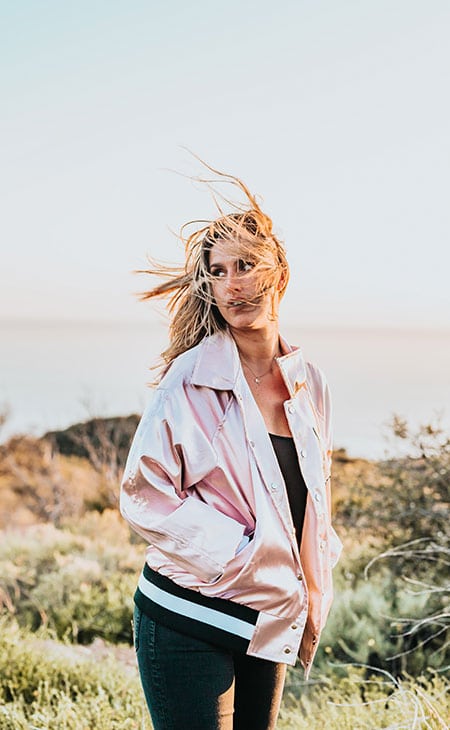
Satin is typically very inexpensive. This is not true when satin is made with silk. These jackets are expensive and may not be suitable for wet weather wear.
SPORT COAT
The sport jacket is a casual jacket that is similar to a suit jacket or blazer but is more casual in nature. They were originally created to be worn while participating in specific sports. These jackets would have modifications for each sport, such as the recoil patch on shooting jackets.
Sport jackets are available in multiple patterns, colors, and fabrics. Some of the most popular sport jacket fabrics are cotton, corduroy, denim, and leather.
SHIRT JACKET
The shirt jacket goes by many names. It is also referred to as a bush jacket or, perhaps most commonly, a safari jacket. No matter what it is called, the shirt jacket has the same basic style.

Shirt jackets are lightweight jackets that are typically made from cotton, linen, or even denim. They are usually khaki, light tan, or olive green. They resemble a shirt in that they are very light, have shirt collars, and are belted at the waist. They also have at least four pockets with pocket flaps that button down for safety.
Shirt jackets can be traced to the traditional safari jacket worn for safaris in the African bush. The first bush jacket was designed by author Ernest Hemingway.
SHEARLING JACKET
A shearling jacket is a jacket made from processed sheep or lamb pelt. The pelts used for the shearling jacket are made by tanning the hides with some wool in place. This creates a very dense material that is extremely warm and soft.
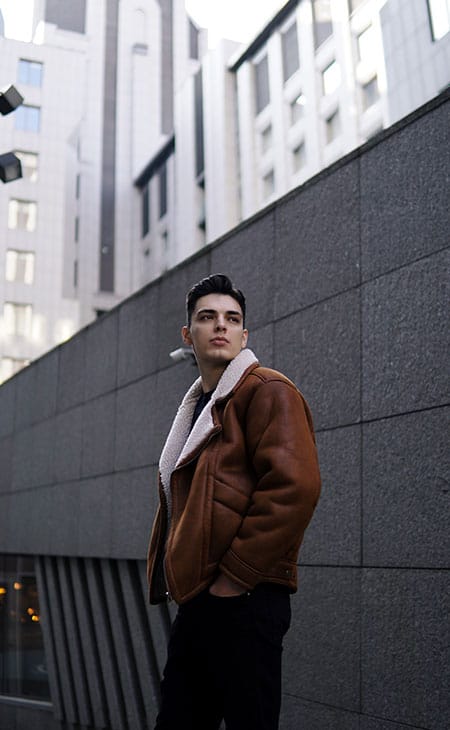
Shearling jackets are good options for people who want to spend time outside in winter weather while continuing to look stylish. Unlike suede, which has a similar appearance, shearling jackets are usually water-resistant.
TECHNICAL JACKET
Technical jackets are jackets that are specifically made for spending many long hours outdoors. They are worn by hikers, campers, mountain climbers, and anyone who loves to spend time outside.
Technical jackets are offered in a wide variety of styles. Puffy jackets can be considered technical jackets. Softshell technicals allow for flexibility, while hardshell technical jackets provide the most protection. Technical jackets are noted for breathability, being windproof, being waterproof, and having multiple pockets. Most technical jackets have attached hoods.
TRACKSUIT JACKET
A tracksuit jacket is a jacket that is made to wear over athletic clothing to keep the body warm before a sporting event. It is made from synthetic materials that are easily dyed into bright and vibrant colors. Tracksuit jackets may be understated or daring in their color and patterns.
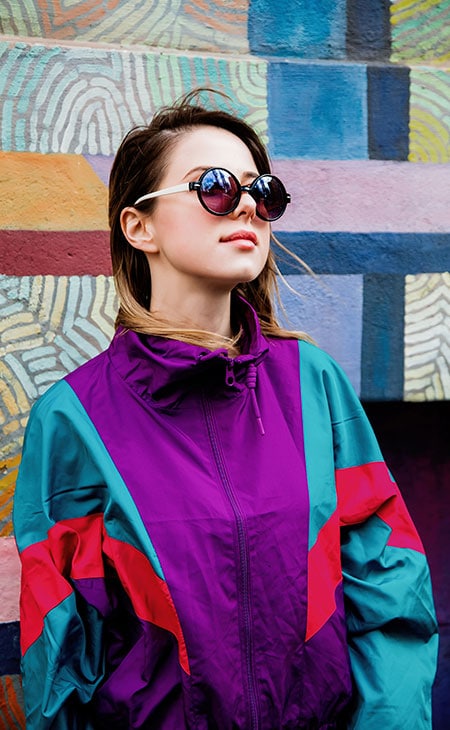
A tracksuit jacket zips in the front and has a shirt or up-turned collar. It usually has one or two functional pockets. The interior of the tracksuit jacket is often lined with mesh.
TRUCKER JACKET
A trucker jacket is a denim or corduroy jacket that is made with specific details for a uniform look. The trucker jacket is tailors so that it fits close to the body. The hem stops directly at the waist. The front flaps close with buttons, as do the sleeve cuffs and pockets.
Trucker jackets have two v-shaped seams on the front flap. This pattern is also seen in the chest pockets, which have flaps that are pointed.
VARSITY JACKET / LETTERMAN JACKET (SEE ALSO: BOMBER JACKET)
A varsity jacket may also be called a letterman jacket or simply a letter jacket. It is given this name thanks to the varsity letter that some college or high school athletes earn when playing their sports. That letter is then sewn onto the jacket. Some wearers may include additional patches to their jacket, like the year of graduation or team mascots.
The standard varsity jacket follows the same style as the bomber jacket. It is made from leather or a combination of wool and leather. The jacket is usually purchased to match the school colors.
WINDBREAKER
The windbreaker is a jacket made with light, thin fabric. It is primarily used to combat slights winds, and rain. Windbreakers are very popular among athletes because they offer some protection without creating an environment in which the wearer might become overheated.

Windbreakers are made of synthetic materials like nylon. They usually do not have a lining. When they do, the lining is a similarly light material or even a mesh. Windbreakers have ribbed waistband and sleeve openings. They have zipper closures and usually have at least two side pockets.
WOOL JACKET
A wool jacket is any jacket that is made with fibers made from sheep hair. Wool jackets are popular for providing warmth in a fashionable jacket that might be worn to both casual and dressy events.
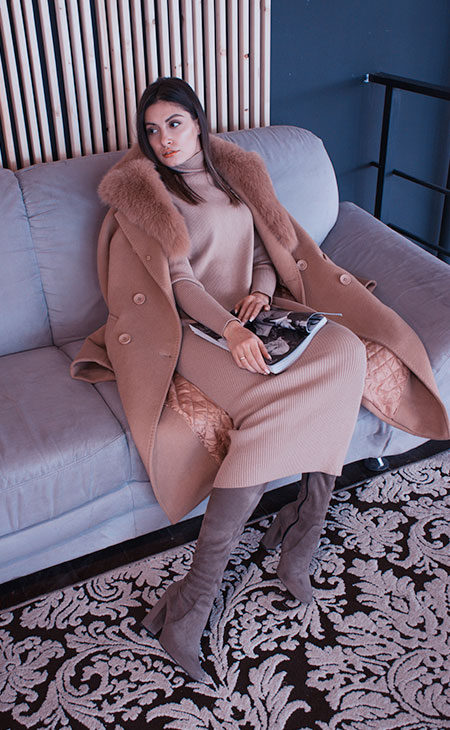
Wool jackets come in many different styles. For instance, the wrap jacket is an open jacket with no closures that has a wraparound belt. Blazers, shirt jackets, and boyfriend jackets are other styles that are often made with wool.
Now you know all about the different types of jackets, but you still have a lot to learn! Don’t you want to know how each jacket is meant to be worn? If so, keep reading! The next chapter will tell you exactly what you need to know.
Jackets for Women and How to Wear them
Jackets that are typically marketed to women are extremely varied in style and purpose. Many women’s jackets are designed to fulfill specific needs, such as combating cold weather. Others are made to be worn as accessories to complete a fashionable ensemble.
The following chapter describes women’s jackets and how they are typically worn. Once you finish reading this chapter, you will be ready to pair your favorite jacket with the perfect outfit. You might also find yourself shopping for a few of the styles on this list!

Are you ready to learn? Let’s get started.
Following is a list of women’s jacket styles, what each term means, and how the jackets are regularly worn.
Quilted Jacket
A quilted jacket is a warm jacket that has a quilted pattern on the exterior. The quilting is often, though not always, done in a diamond pattern. Other patterns typical for quilted jackets are small squares or waves. Quilted jackets are typically made from polyester or nylon. They may be stuffed with synthetic material or down. Patchwork jackets, those that are made by quilting squares of cloth together, are not synonymous with quilted jackets.
Quilted jackets are functional pieces that are made to be worn in cold weather. They shouldn’t be considered for extremely frigid days but are fine for rain and light snow. As such, these jackets are typically paired with casual, cold-weather apparel.
Puffer Jacket
A puffer jacket is a thick jacket made from nylon or polyester. The stuffing in the jacket is usually down but can also be synthetic material. The puffer jacket gets its distinctive puffed look from the quilted rows that are sewn throughout the piece. These air pockets allow the jacket to fill with warm air, which maintains heat throughout the jacket.
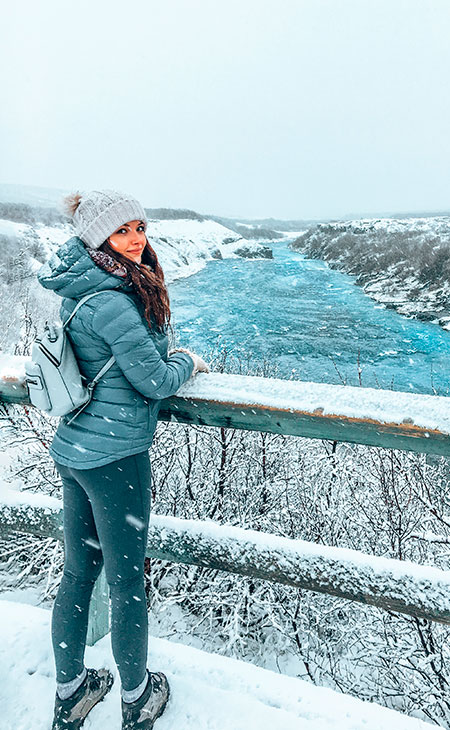
Puffer jackets are typically worn in cold or very cold temperatures. The outer material is waterproof, which makes them excellent choices for use in severe winter weather. They are often worn with jeans or snow pants for outdoor use.
Bomber Jacket
The bomber jacket’s original purpose was to keep pilots warm in cold cockpits during World War I. It didn’t take long for the bomber jacket to become a fashion staple for both men and women. The design includes a ribbed waist and cuffs with a zipper front and two usable pockets. Most bomber jackets have ribbed collars, though this can vary. The material used for bomber jackets might be leather, nylon, or another polyester blend.
Bomber jackets are versatile pieces. They are worn with jeans, skirts, or athletic clothing. They can even be added to formal wear, like cocktail dresses, for a unique look. Bomber jackets are not typically seen with professional clothing, but the right accessories can make them a fun, funky addition to any ensemble.
Leather Jacket
A leather jacket is any jacket that is made from leather. It might be made in the style of a bomber jacket, a blazer, or a bomber jacket. In many cases, when one thinks of a leather jacket, you think of motorcycle jackets. In all cases, leather jackets are highly durable pieces that provide both warmth and style. These jackets are rarely waterproof, so care does need to be taken when wearing them outdoors.

Leather jackets can be added to any type of outfit, depending on the design. They can be professional, formal, or casual pieces. Those who like the look and feel of leather but practice a vegan lifestyle can find many faux-leather pieces. These jackets usually wear better in the rain, but they don’t have the longevity of real leather.
Denim Jacket
A denim jacket is any jacket made from denim. Denim is a highly versatile material that is used for blazers, Harrington jackets, boyfriend jackets, and many others. The most popular design for denim jackets is the trucker jacket. These jackets have button closures, button wrists, and several usable pockets that also close with buttons.

Trucker jackets are very casual. They look great with leggings, skirts, casual dresses, and slacks. They should not be worn in very cold temperatures as they don’t provide much warmth.
Parka Jacket
A parka jacket, usually simply referred to as a parka, is made for extremely cold weather. The traditional parka is a leather jacket lined with fur. It has a hood with ties to create a snug fit in cold weather. It is more common today to find parkas made with polyester with down filling. They may have fur, faux fur, or fleece lining. Hoods are either attached are detachable. Hoods are almost always lined with either fur or faux fur.

A parka is not an “everyday” jacket. The warmth provided by the parka is useful for those who live in areas with very cold climates. A parka is rarely viewed as a fashion accessory but as a must for winter weather.
Blazer
A blazer is a less formal version of a suit jacket. It has the standard lapel and sleeve vents of a suit jacket but has a less tailored appearance. Like the suit jacket, a blazer may be either single- or double-breasted. Unlike a suit jacket, a blazer is a separate piece that is not part of a complete set. Fabrics used for blazers include cotton, wool, polyester, denim, and even leather.
Blazers are versatile in that they can be worn with very casual clothes, professional ensembles, or formal wear, depending on the style. Simple jeans and a t-shirt are made chic when a blazer is added. A trendy look is to wear a large blazer atop a hoodie.
Faux-fur Jacket
A faux-fur jacket is a jacket that is any jacket that is made with faux fur. The jacket may simply be lined with faux fur or have faux-fur accents. A typical faux-fur jacket is fully made with the material with the addition of a satin lining. These jackets are usually fashion accessories that are not typically worn for warmth.
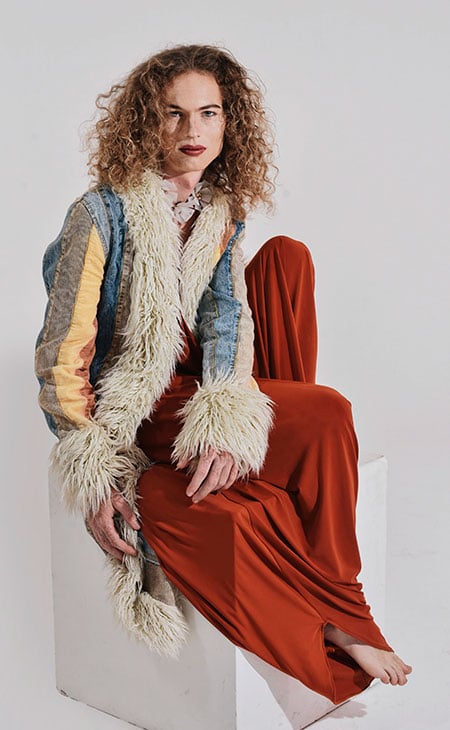
Faux-fur jackets are lovely when paired with both casual and formal looks. The key to making a fake-fur jacket work is to make it the centerpiece of the ensemble. It is best when faux fur is the statement, and all other parts of the outfit are understated.
Military Jacket
A military jacket, also known as a field jacket, is an oversized piece that has many pockets both inside and out. Military jackets are lightweight, usually made from cotton, though synthetic materials are not uncommon. These jackets are useful for layering as they are usually very roomy.
Military jackets are casual pieces that are not seen in formal or professional settings. Pair a military jacket with a turtle neck and skinny jeans or a mini skirt for a look at is both fun and functional.
Waterproof Jacket
A waterproof jacket is made to be worn in wet conditions. They are good choices for outside activities when rain or snow is a possibility. A waterproof jacket is necessary for outdoor sports like white water rafting or skiing. Some may prefer to wear waterproof jackets on a regular basis in rainy climates.
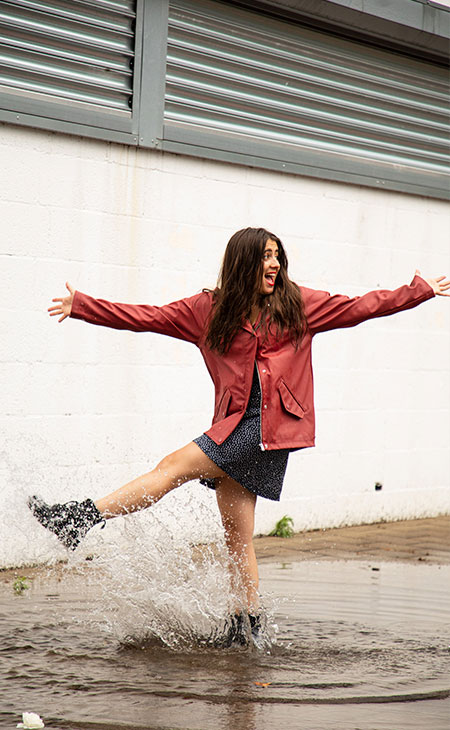
The difference between waterproof and water-resistant is an important one to note. Water-resistance means that the jacket can withstand some exposure to water. Over time, with enough exposure, the jacket will begin to show signs of damage. Water repellent jackets are coated with a chemical or even a type of technology to keep water from entering the cloth fibers.
Like water-resistant jackets, water-repellent jackets may show damage over time. Waterproof jackets are made specifically to be used in water. They are not often the most comfortable choices, but they should last the longest.
Boyfriend Jacket
A boyfriend jacket is basically an oversized blazer. It is made with the same basic design as the blazer but has a wider cut along the shoulder. This allows the blazer to slouch along the shoulders and arms. The length of the jacket may be a bit longer than the hip line. Arms are usually looser than those of the standard blazer.
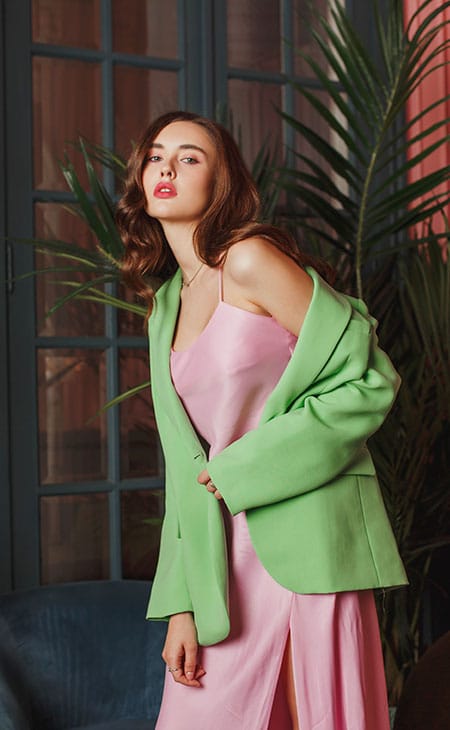
A boyfriend jacket is usually worn with casual clothing. They can be worn with semi-professional or semi-formal looks depending on the fabric and design.
This list of women’s jackets should give you some idea about which jackets you need in your closet for your daily ensembles. You are now probably wondering which jackets should be worn for specific occasions. You are in luck! Keep reading to learn the right jacket for any event.
Jacket Styles depending on the Occasion
Different occasions require different types of apparel. This is true for everything from shoes to handbags to jackets. This chapter explains different types of social situations and special occasions while giving you some tips on the right jackets to wear to these events.
Some jackets might be part of the ensemble. Others are meant to be worn as outerwear that is removed once you reach your destination. Once you are finished reading, you will be able to easily choose the right jacket to wear to any occasion.

Wearing Jackets To Work
The jacket you wear to your workplace depends on your place of work, your particular position, and the atmosphere around you. To make your jacket selection easier, narrow down your working atmosphere to either an office or non-office environment.
Non-office jobs may be as varied as food service, industrial work, or medicine. These jobs may require flexibility that is not often offered with jackets. A hoodie, windbreaker, or casual blazer might be suitable if you need a jacket because the environment is cold. Shirt jackets are good, casual choices as well.
Blazers are perfectly suited for office jobs. They are wearable with practically any professional or semi-professional outfit.
Jackets & Dressing Up
Going out for a night on the town means finding fun yet dressy jacket to complete your look. A bolero, dinner jacket, or faux-fur jacket may be the way to go to for a layer of fashionable warmth.
Dinner jackets, also known as tuxedos, are stunning choices for men who want to dress up for their special event. A blazer might be a better choice if the occasion is dressy but not formal. Blazers are also fine choices to wear with dresses for special occasions.
Off-Duty Jackets
Being off-duty means that you are not at your workplace or not currently working. Off-duty clothing can look any way you want. Dressing up or down is all up to you! That said, if you are at your workplace for an event, such as an office party, you may want to continue looking professional while being true to your own fashion sense.

There are many jackets you can choose that look nice while not being strictly professional. Peplum jackets and suit jackets are good go-to pieces for off-duty clothes while still appearing at work. Any other jackets can be perfectly acceptable, depending on the situation.
Choosing a Jacket for a Job Interview
A suit jacket, tweed jacket, or blazer is the right choice for most job interviews. You will make a good impression by showing up in a jacket that has a professional style. Stick to solid colors and avoid any jackets that have sequins or jewels.
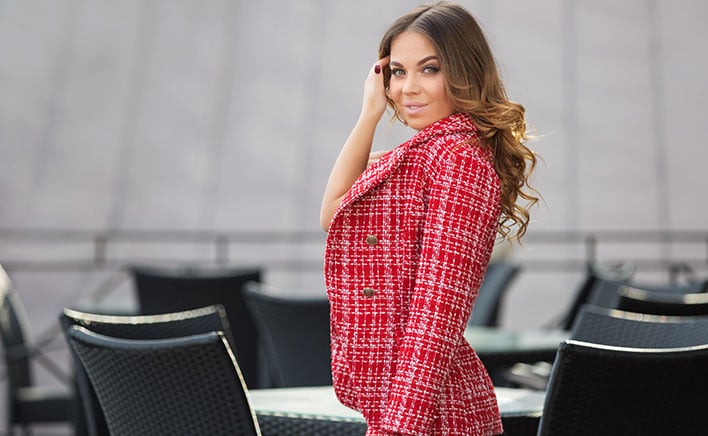
There are some jobs you may apply to in which a suit jacket is not necessary. While it’s always fine to be overdressed, you might feel more comfortable in a casual jacket like a Harrington jacket. This is a fine choice, but there are some jackets that should not be worn to job interviews. Windbreakers, hoodies, biker jackets, and denim jackets should be avoided.
Casual Events
The great thing about casual events is that you can wear any jacket you like. Wear the jacket you desire for warmth or the one that you feel completes your look. A faux-fur jacket with jeans or a windbreaker with a tracksuit might be the right choice depending on the event.
Even a tuxedo jacket might be a fun departure for a casual evening. Wear the tuxedo jacket with jeans and a sweater or button-up shirt to create a mix-and-match.
Formal Events
Formal events are arguably the least versatile of any special occasion. Whether you are attending a wedding or a red-carpet gala, you need to make sure your jacket is the ideal accompaniment to the rest of your clothes.
A tuxedo jacket is standard formal wear for a good reason. Wear the tuxedo jacket with a button-up shirt and dress pants. A bolero jacket, particularly in silk, satin, or even lace, is a lovely addition to a formal dress or pantsuit. Some blazers, peplum jackets, or faux-fur jackets might be fine choices for formal events depending on the type of event and the jacket’s material.
Outdoor Events
Your jacket of choice might not be as straightforward as you like if you are headed to an outdoor occasion. You will need to take the type of event and the weather under consideration before choosing the perfect jacket.
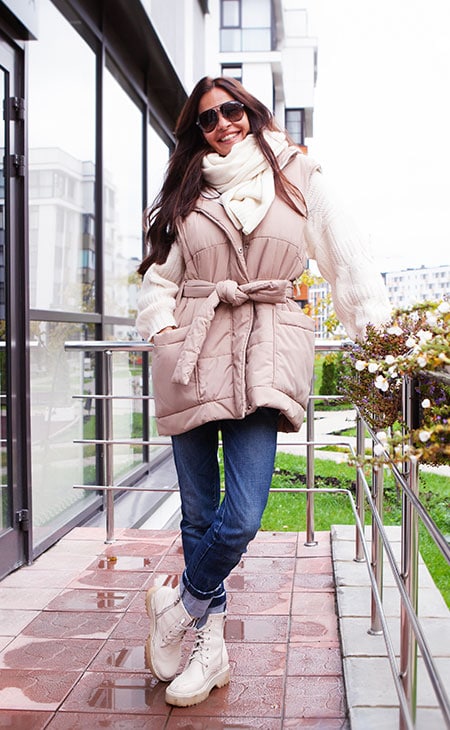
An outdoor picnic in late spring might be the right place for a denim jacket. On the other hand, an outdoor wedding in the summer may be the perfect setting to try out a linen blazer. Holiday gatherings in the snow are suited for quilted jackets, puffer jackets, or even parkas.
A good rule of thumb is that it is always best to be overdressed than underdressed. Therefore, if you worry that your hoodie is too casual for the event you are attending, scrap the hoodie and wear something a bit dressier.
In most instances, you will need to use your best judgment in choosing the right jacket. You can simplify your choice by having standard styles for work, play, and formal events. Once you decide what look you like the best, it will be easier to pair your clothing with your outerwear. Another factor is trends. What is in style, and what is out? Not sure? Read the next chapter to find out.
What Jackets are in Style & Outfit Ideas
Jackets are not just functional pieces. They are also additions to a well-stocked wardrobe. Like all clothing, jacket styles come and go. Make sure you know what jacket styles are in and which ones are out.
Reading this chapter will help you make the best decision for choosing stylish, trendy jackets. It will also guide you on spending your hard-earned dollars on classic pieces that are timeless. When you are finished reading, you’ll be ready to shop for a new jacket with confidence!
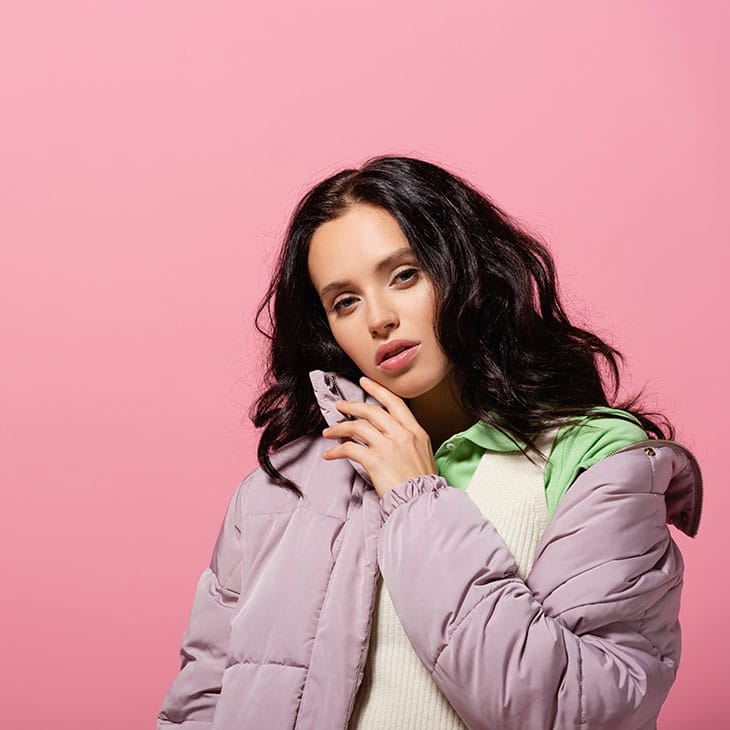
Jacket styles come and go. Sometimes, the trend is high fashion with lots of glitz and glamour. Other years, jackets in style are those that place form over fashion. This year, you will see that most trendy jackets have one thing in common: Comfort. From supersized puffers to soft shearling, feeling warm and cozy is the biggest trend of the season.
Leather jacket outfit ideas
Leather jackets are always en vogue. These classic jackets are built to last while retaining their beauty year after year. This year, look for an oversized leather jacket or a leather blazer. The oversized jacket gives you plenty of room for layering, while the leather blazer is a multi-functional piece that works in professional and casual settings.
Consider dropping the tired black or brown leather jacket this season and opting for something more daring. Red and pink leather are trendy jacket options that will give your wardrobe a much-needed boost.
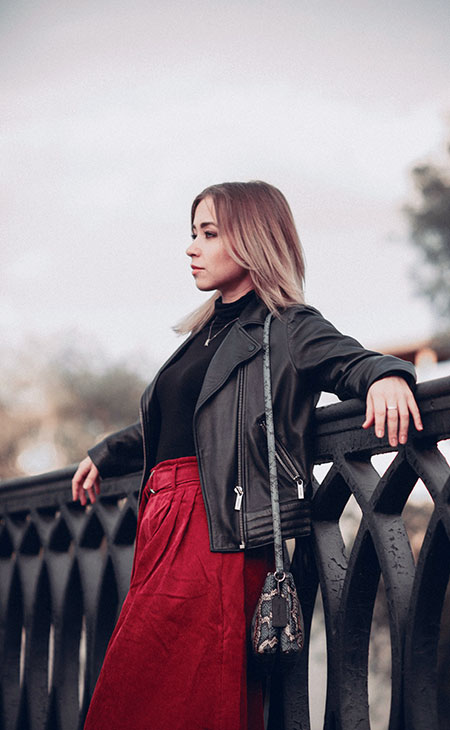
Shearling jacket outfit ideas
Shearling jackets have been everywhere since spring. Wearing a shearling jacket makes you feel like you are in a constant embrace from the world’s softest teddy bear. Shearling jackets perform double duty because they look amazing while keeping you warm during cold days.
Shearling bomber jackets are favorites among those in the know, but any jacket lined with shearling is a fashionable choice. Are you looking for jackets in style that don’t use animal products? You’re in luck. Faux shearling is just as soft, just as warm, and usually costs less than the real thing.
Quilted jacket outfit ideas
The quilted jacket has been called “the jacket of the year.” This trendy jacket is beloved for its comfort and wearability. The casual silhouette of the quilted jacket looks good and feels great on everybody.
The quilted jacket is a fun choice because it’s offered in a wide variety of colors. You can choose a bold blue, lovely lavender, pretty pink, or classic cream and still be rocking the stylish look that is everywhere right now. Belting an oversized quilted jacket is a great way to make the style your own.
Military jacket outfit ideas
Military jackets are utilitarian accessories that never go out of style. You can find high-end and low-cost military jackets that are equally stylish and functional. Trendy military jackets this year have daring graphics, belted waists, faux fur hoods, or a combination of the three.
A particularly popular military jacket is the shirt jacket. A “shacket” is light and comfortable with plenty of pockets. It adds even more to your wardrobe because it can double as a shirt when worn on its own.
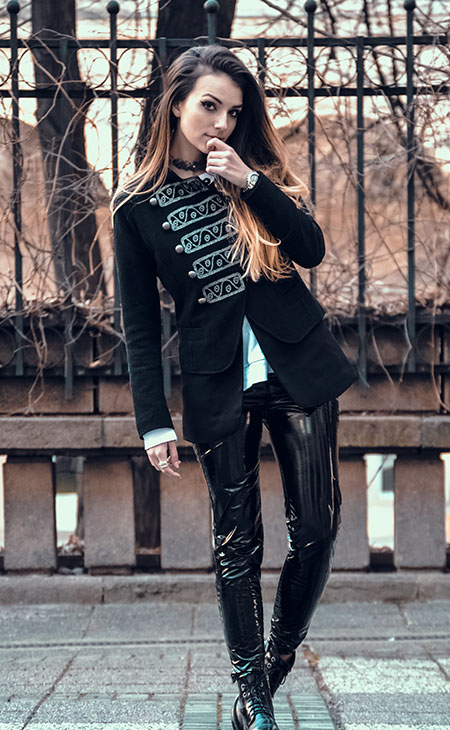
Hooded puffer jacket outfit ideas
Does winter truly arrive if you’re not wearing a hooded puffer jacket? These are some of the most stylish choices this winter and every year. What makes the jacket trend stand out this year is the size. While there are some retro, tailored puffer jackets making a comeback, most are big, bigger, and biggest. The poofier the puff, the trendier the jacket.
Look for jackets labeled oversized or “super puff.” Pair them with leggings to truly accentuate the size. You can go in the opposite direction as well. A cropped hooded puffer jacket may not give you as much heat as their big brothers, but they make up for the lack of fabric with excess style.
Cropped jacket outfit ideas
Cropped jackets are everywhere this season. The polar opposite of the extra-large jacket, cropped jackets hit above the waist or even as high as the chest. You can marry both trends by looking for a quilted, cropped jacket, but the most stylish this season are short, sweet, and skinny.
Look for cropped blazers in neutral tones matched with geometrically printed maxi skirts or capris for a funky, trendy look. Cropped denim jackets and cropped bomber jackets are good choices too.
Belted jacket outfit ideas
Outerwear doesn’t have to be big and boxy. Belted jackets prove that having some structure can be stylish this season. The latest trend with belting jackets is going high-waisted. Belt at the midriff rather than the waist and top it off with a sweet bow.
Another trendy jacket style is belt jackets that are not typically belted. Go ahead and belt a blazer or a puffy jacket. The look will be uniquely in style. Of course, the easiest route is to buy a belted jacket.
These are available in so many versions you might have difficulty deciding which will give you the hottest look of the season. You can’t go wrong with a belted trench jacket, but feel free to try something completely different, like a belted denim trucker jacket.
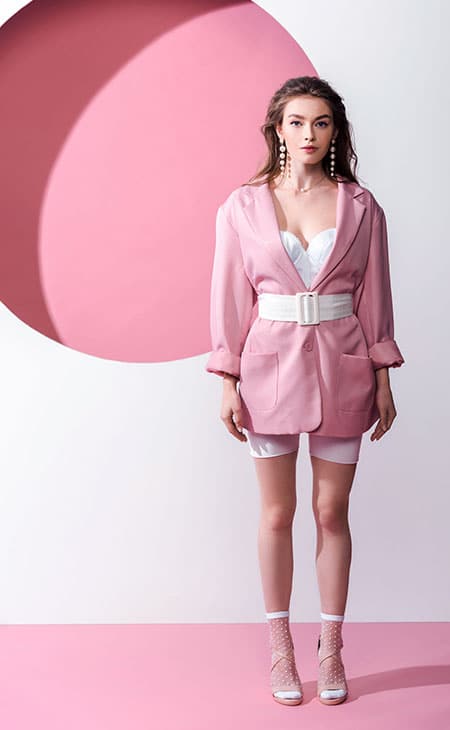
Blazer outfit ideas
It seems like blazers are always in style, but different versions are hotter than others. Right now, boyfriend blazers are the most popular on the street or the runway. These oversized blazers provide ample room for the current fad of wearing a hoodie under the blazer, but it also looks sleek paired with a t-shirt and skinny jeans.
Another blazer trend this year is the collarless blazer. These are often belted for a super modern feel. Lastly, the double-breasted blazer is making a comeback. If you see two columns of buttons, don’t shy away.
Tweed jacket outfit ideas
Tweed jackets are back in a big way. The 1980s are alive again with tweed blazers making the rounds. Tweed blazers, both collared and collarless, are offered in bright colors, fun patterns, and the typical tweed texture.
Tweed is ideal when paired with matching pants or a micro-mini. A classic tweed jacket over a button-up shirt and jeans is an easy way to stay chic. You don’t even have to shop for tweed jackets this season. Just take a trip to your grandfather’s closet.
Bomber jacket outfit ideas
A list of jackets in style this season would not be complete without mentioning bomber jackets. These jackets are my favorites because they are comfortable and versatile. You can wear a bomber jacket with a dress, jeans, shorts, or athletic gear without worrying about clashing styles.

For this reason alone, it is worthwhile to invest in a high-quality bomber jacket that will get you through this season and many more to come. Look for a bomber jacket that is a neutral color and has clean lines if you want to wear it year after year. If your concern is a trend that is more short-lived, look for bomber jackets with bright patterns, patches, or graphic prints.
CONCLUSION
Did you realize there was so much to know about such a simple piece of clothing? You might have thought a jacket is just something you throw on before heading out of the door. However, now you know the importance the right jacket makes for formal, semi-formal, casual and even athletic events. You know what to wear with different jackets and which ones are the most stylish at this very moment. By studying jackets, you might even be able to predict which styles will be hot next season!
Hopefully, you have had all of your jacket questions answered with this post. Now, it’s time for us to ask you some questions. Is there anything else you need to know? Do you have anything to add about current styles or trends? We would love to hear your feedback. Leave a comment for us with anything you want to share.
Did you love what you read? Don’t forget to share this post with your friends! Likewise, we have plenty of content that you are sure to enjoy. Explore our site so you can keep reading and keep learning!
